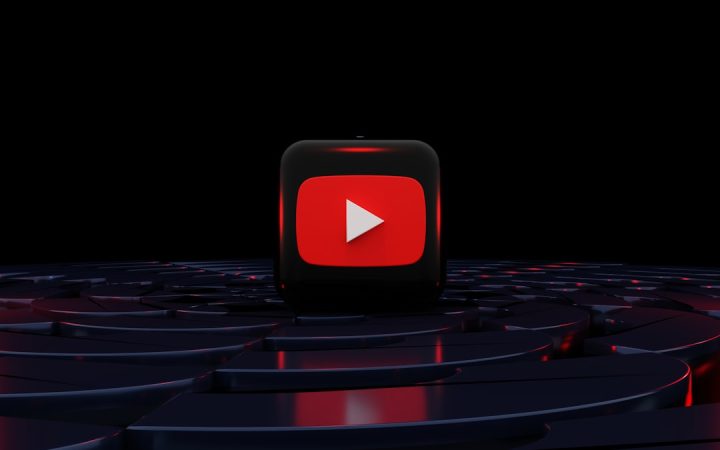Whether you’re a content creator sharing tutorials or an artist showcasing your portfolio, achieving the highest possible video quality on YouTube is a priority. However, many users have encountered a frustrating issue: after exporting high-quality videos via Movavi Video Editor, the videos appear significantly blurrier once uploaded to YouTube. This article explores the reasons behind the loss in clarity and the specific bitrate adjustment that preserved sharpness during uploading.
TLDR
Exported videos from Movavi can appear blurry on YouTube due to a mismatch in encoding settings and YouTube’s automatic compression. The issue is particularly noticeable at lower bitrates or when rendering in lower resolutions, such as 1080p. By increasing the export bitrate in Movavi and selecting appropriate encoding formats, users report significantly higher clarity in the final YouTube-uploaded product. The right combination of bitrate, codec, and resolution preserves fine detail and prevents YouTube’s own compression from degrading your video quality.
Understanding the Problem: Why Do Videos Turn Blurry?
Movavi Video Editor offers a user-friendly interface and a range of customization options, but despite exporting videos at seemingly high-quality presets, many content creators have noticed distinct quality loss after uploading their videos to YouTube. This often appears as:
- Smeared textures or soft details
- Compression artifacts, particularly visible in motion or gradients
- Lack of sharpness compared to the local playback version
This occurs because YouTube re-encodes every uploaded video using its own compression algorithms. If the source file already has a relatively low bitrate or uses settings that don’t align with YouTube’s favored formats, the platform applies aggressive compression, which in turn significantly reduces quality.
YouTube’s Encoding Standards
YouTube, by default, compresses all incoming videos to optimize for web streaming across various devices and bandwidth conditions. The platform uses two types of codecs primarily:
- AVC (H.264): used for videos with lower resolution or lower engagement
- VP9: assigned to high-resolution uploads (1440p and 4K) and popular content
If you upload a 1080p video at a modest bitrate, it will often be encoded into the ADC codec, which is more compression-heavy. The result? A noticeably blurry playback, particularly for details such as text, hair, or textures.
How Movavi’s Default Settings Affect Quality
Movavi’s export settings offer several presets like “YouTube 1080p” — seemingly straightforward options aimed at ease of use. However, these settings often prioritize fast rendering and smaller file sizes, sacrificing bitrate — the depth of information in your video file — in the process.
For example, exporting at 1080p with a bitrate of 5,000 kbps might look fine on your desktop, but that rate falls below YouTube’s recommended upload bitrate for HD content, which is:
- 8,000 kbps for 1080p at 30 fps
- 12,000 kbps for 1080p at 60 fps
Furthermore, Movavi sometimes selects constant bitrate (CBR) encoding, which maintains the same bitrate regardless of whether the scene is simple or complex, potentially wasting bandwidth on static shots and not providing enough on more dynamic ones.
The Key Fix: Bitrate Adjustment and Manual Export Settings
To counter the blur and compression introduced by YouTube, several users and experts have found success by manually adjusting the export settings in Movavi. Here is how:
Recommended Export Settings in Movavi for YouTube
- Resolution: 1440p or 4K (even if your project is 1080p — more on that below)
- Bitrate: VBR (Variable Bitrate) set between 15,000 and 30,000 kbps for 1080p
- Codec: H.264, High profile with CABAC enabled
- Frame Rate: Match your source (commonly 30 fps or 60 fps)
- Audio: 384 kbps or higher AAC
The most notable result comes from increasing the resolution to 1440p before exporting. This “tricks” YouTube into using the VP9 codec, which compresses files less aggressively, greatly improving detail preservation. Keep in mind that increasing resolution artificially (through upscaling) won’t generate true 1440p video quality, but it does let you bypass AVC encoding on YouTube — a worthwhile tradeoff for many creators.
Case Study: Before vs After Bitrate Tuning
A video blogger recently shared two versions of the same edited video: one exported with Movavi’s standard 1080p YouTube preset (around 6,000 kbps), and the other with manually selected VBR at 24,000 kbps and resolution changed to 1440p. The result?
- The 1080p video looked soft, especially during panning shots and overlays
- The 1440p video, although originally sourced at 1080p, appeared sharper and more vibrant post-upload
The difference highlighted the role bitrate and encoding settings play not only in local playback but also in how YouTube decides to compress and deliver your content.
Best Practices When Exporting with Movavi
Based on hands-on testing and community feedback, consider adopting these practices:
- Export in a higher resolution (upscale if needed): Going with 1440p or 4K gives your video a higher chance of being encoded with VP9.
- Manually set a higher bitrate: Use VBR over CBR and aim for 15,000 to 25,000 kbps for 1080p content to reduce quality loss.
- Use YouTube’s recommended specifications: Refer to YouTube’s Help Center for official suggestions.
- Don’t rely solely on presets: Customize export settings to match the visual complexity of your project.
Conclusion
The issue of blurry uploads isn’t a flaw in Movavi, nor is it entirely YouTube’s fault. It’s the result of default export settings not aligning with the demands of YouTube’s encoding algorithms. Understanding how bitrate and resolution interact with YouTube’s compression is essential for producing clear, sharp content.
By tweaking the settings — especially by exporting at higher bitrates and resolutions — creators can maintain the quality they worked hard to achieve in their editing timeline. Movavi, while intuitive and beginner-friendly, offers deep customization for those willing to look under the hood. Taking a few extra minutes to manually refine your export settings can dramatically improve your video’s appearance after uploading to YouTube.
As more users share findings about codec preferences and bitrate thresholds, it’s clear that high-quality YouTube video doesn’t start in the upload window — it starts in the export configuration.
